How can I identify the birds visiting my garden?
How to Identify the Birds Visiting Your Garden: A Beginner's Guide
Watching birds flit around your garden can be a calming and joyful experience. But if you're curious about who these feathered visitors are, learning to identify them is both fun and rewarding. Here's a guide to help you get started with identifying the birds that frequent your outdoor space.
- Start with the Basics: Bird Size, Shape, and Colour
The easiest way to begin identifying birds is by paying attention to their size, shape, and colour patterns. Here's how to break it down:
- Size: Compare the bird to familiar birds like a sparrow or a crow. Is it smaller, about the same size, or larger?
- Shape: Look at the bird’s body structure. Is it round and plump like a robin, or sleek and slender like a swallow? The shape of the tail, beak, and wings can also give clues.
- Colour Patterns: Note the dominant colours of the bird. Is it bright and bold, like a cardinal, or more muted and camouflaged like a house sparrow? Pay special attention to any stripes, spots, or other markings.
Tip: Jotting down quick notes about these traits will help with identification later!
- Listen to Their Songs and Calls
Birds use songs and calls to communicate, and each species has a distinct sound. You don’t need to be an expert in bird song to use this as an identification tool. Start by noticing the pitch, rhythm, and length of the bird’s calls. Is it a cheerful chirp or a long melodious whistle?
There are some useful apps, like Merlin Bird ID or Song Sleuth, that can help you match bird sounds to specific species. You can even try recording the bird's song to analyse it later.
- Observe Feeding Habits and Behaviour
Different birds have unique feeding behaviours that can provide clues to their identity. For example:
- Ground feeders like blackbirds and sparrows are often seen hopping around on the grass looking for seeds or insects.
- Perching birds such as finches and robins will land on branches or feeders, pecking at seeds or berries.
- Aerial feeders like swifts or swallows catch insects in mid-flight, often swooping and diving gracefully.
Knowing what kind of food is available in your garden can also help identify the types of birds you attract. If you put out specific feeders, certain birds may come just for that. For example, thistle seed feeders tend to attract goldfinches.
- Note the Time of Year and Location
Some birds are year-round residents, while others only visit during migration or certain seasons. Knowing when certain birds are likely to appear in your area can narrow down your options for identification.
For example, migratory species like warblers might only be seen during spring or fall, while common garden birds like sparrows or robins could be present all year. Using a bird guide for your specific region can help you track these patterns.
- Use Bird Identification Guides and Apps
If you’re unsure about a bird, consulting a bird field guide or using an app can give you more information based on your observations. Here are some popular resources:
- Field Guides: Books like The Sibley Guide to Birds or The Peterson Field Guide are excellent for quickly referencing birds by appearance and location.
- Apps: Apps like Merlin Bird ID (from the Cornell Lab of Ornithology) allow you to input characteristics like size, colour, and location to suggest possible species. iNaturalist is another useful tool for getting community input on bird sightings.
- Join Local Birdwatching Groups
Birding communities, either online or local, can be a great source of knowledge. Many cities and regions have birdwatching groups or societies that organize walks or provide identification workshops. Sharing your garden sightings with others can help you learn quickly and identify birds that might be unfamiliar.
If you're not sure where to start, you can look for groups on platforms like Facebook or attend a bird walk at a nearby nature reserve. The added bonus: you'll learn from experienced birders who can offer expert insights.
- Set Up a Bird Journal
Keeping a journal where you record the birds you see, their behaviours, and the time of year can help track patterns. Over time, you'll start to notice trends and become familiar with the regular visitors to your garden.
A typical bird journal entry might include:
- Date and time
- Weather conditions (since some birds appear more in certain types of weather)
- Bird size, colour, and markings
- Behaviours (feeding, nesting, singing)
- Photos (if you’re able to capture them)
- Attract More Birds to Your Garden
If you want to expand the variety of birds visiting your garden, try adding elements that attract different species. Some tips include:
- Bird feeders: Offer a variety of seeds, suet, or nectar to attract everything from finches to hummingbirds.
- Bird baths: Birds need water to drink and bathe, so providing a clean birdbath will draw in species looking to quench their thirst or cool off.
- Native plants: Plant trees, shrubs, and flowers that provide natural food sources such as berries, seeds, or nectar. Native plants also attract insects, which some birds eat.
Conclusion
With a little patience, attention to detail, and the right tools, you’ll be well on your way to identifying the birds that visit your garden. Whether you're watching a common sparrow or a rare visitor, learning about your feathered friends can deepen your connection to nature and make your garden a haven for wildlife.
Happy birdwatching!








